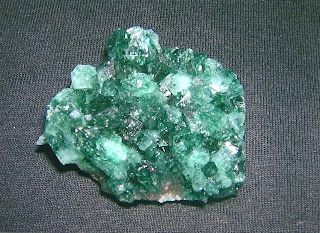 Orthoceras was an ancient Mollusk that dated back to the Silurian age 400 million years ago. They are the ancestors to the squid and its nickname was straight horn because their characteristics were of being long and straight. These straight shelled nautiloids ranged from less than a centimeter to more than 10 feet in length. Orthoceras could crawl the ocean floors as well as float through the water by propelling its self. Orthoceras fills its chamber inside their shells with air then squirting jets of water out. This way they could feed on the ocean floor and feed while floating. Many of these occurrences have been found in Morocco, and N.Africa and among many other places around the world.
Orthoceras was an ancient Mollusk that dated back to the Silurian age 400 million years ago. They are the ancestors to the squid and its nickname was straight horn because their characteristics were of being long and straight. These straight shelled nautiloids ranged from less than a centimeter to more than 10 feet in length. Orthoceras could crawl the ocean floors as well as float through the water by propelling its self. Orthoceras fills its chamber inside their shells with air then squirting jets of water out. This way they could feed on the ocean floor and feed while floating. Many of these occurrences have been found in Morocco, and N.Africa and among many other places around the world. Sunday, October 19, 2008
Orthoceras (fossils)
 Orthoceras was an ancient Mollusk that dated back to the Silurian age 400 million years ago. They are the ancestors to the squid and its nickname was straight horn because their characteristics were of being long and straight. These straight shelled nautiloids ranged from less than a centimeter to more than 10 feet in length. Orthoceras could crawl the ocean floors as well as float through the water by propelling its self. Orthoceras fills its chamber inside their shells with air then squirting jets of water out. This way they could feed on the ocean floor and feed while floating. Many of these occurrences have been found in Morocco, and N.Africa and among many other places around the world.
Orthoceras was an ancient Mollusk that dated back to the Silurian age 400 million years ago. They are the ancestors to the squid and its nickname was straight horn because their characteristics were of being long and straight. These straight shelled nautiloids ranged from less than a centimeter to more than 10 feet in length. Orthoceras could crawl the ocean floors as well as float through the water by propelling its self. Orthoceras fills its chamber inside their shells with air then squirting jets of water out. This way they could feed on the ocean floor and feed while floating. Many of these occurrences have been found in Morocco, and N.Africa and among many other places around the world. Posted by Laurie 0 comments
Kyanite Al2SiO4 Silicate Group
Posted by Laurie 0 comments
Agate SiO2 Silicate group, subgroup Quartz



Posted by Laurie 0 comments
Moonstones KAISi3O8 Silicate Group, subgroup Feldspar
Posted by Laurie 0 comments
Freshwater pearls CaCO3 Organics Group
Posted by Laurie 0 comments
Brachiopods- Microspirifer (Fossils)

Posted by Laurie 0 comments
Fern fossil
Fossils are the mineralized or otherwise preserved remains of animals, plants and any other living organism. Ferns first appeared during the Devonian, in highly vast areas worldwide which were covered in dense forests. Overtime these fern trees formed what are known as carboniferous coal swamps. Fossil ferns may be abundant and can usually be found where the environment is acidic. Coal deposits are a great location for many plant fossils. Fern fossils range in color from brownish black, whit, gray and tan. Pyrite and Pyrophyllite are the cause for the white coloration of the fern. There are many plant fossil occurrences all over the world. Fern fossils can be found in mudstones and shale. Large amounts have been found in Pennsylvania and West Virginia.
Posted by Laurie 0 comments













